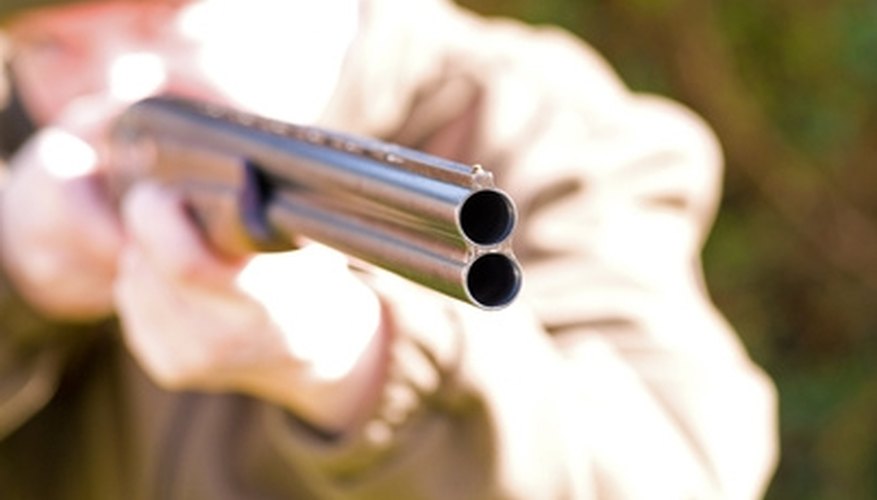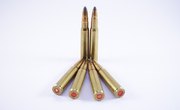
A shotgun choke is designed to constrict the bore at the muzzle end of the barrel. The constriction forces the shot fired from the shotgun into a tighter pattern. A more constricted choke will keep the patterns tighter farther away from the shotgun. When shooting with a choke, it is important to note while the pattern is tighter father away from the shooter, the speed and force of the pellets on the target remain the same as if fired from a barrel without a choke.
Items you will need
Choke gauge
30-inch diameter sheets of paper or target material
Choke removal tool
Step 1
Read the barrel stamping. Many shotguns, especially with built-in chokes, contain the choke information stamped on the barrel, next to the gauge marking. Check your 20-gauge shotgun's barrel near the action for stamped data.
Step 2
Remove the choke and read the stamping. For shotguns with removable chokes, use a choke removal tool and unscrew the choke from the muzzle end of the barrel. The choke will usually have the choke size stamped in the metal on the outside edge of the choke.
Step 3
Pattern the shotgun to determine the choke. The more constricted a choke is, the more pellets will hit the target at a fixed distance. At 40 yards, shoot at the center of a 30-inch-diameter target. While no choke chart can be perfectly accurate, for a 30-inch-diameter target at 40 yards, the following guidelines can be used for choke sizes and approximate percentage of shot available hitting the pattern: cylinder chokes will have 40 percent of the pellets fired hit the target; skeet chokes will have 53 percent of the pellets fired hit the target; improved cylinder chokes will have 57 percent of the pellets fired hit the target; modified cylinder chokes will have 67 percent of the pellets fired hit the target; improved modified chokes will have 73 percent of the pellets fired hit the target; and full chokes will have 75 percent of the pellets fired hit the target.
Step 4
Use a choke gauge to measure the choke size. Insert the 20-gauge choke gauge into the muzzle end of the barrel. The choke gauge will fit into the barrel only as far as the gauge allows. The less constricted the choke, the more of the choke gauge will fit in the barrel. Read the lines on the outside edge of the choke gauge at the point of fit to determine your choke size.
References
Writer Bio
Skip Shelton has been writing since 2001, having authored and co-authored numerous articles for "Disclose Journal." He holds a Bachelor in Science in education and a Master of Business Administration with an emphasis in management from Northwest Nazarene University. Shelton also operates a small automotive maintenance and part-replacement shop.



